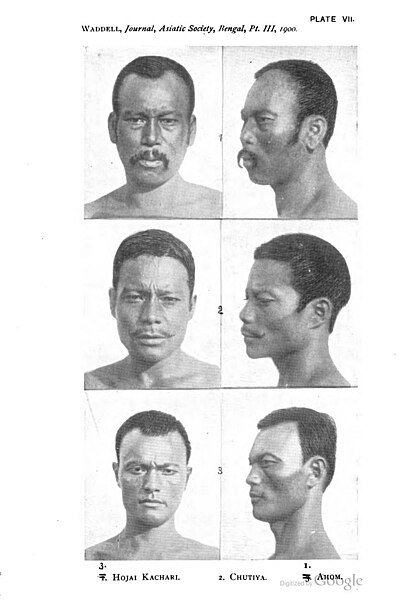Srimanta Sankardev was a 15th–16th century Assamese polymath; a saint-scholar, poet, playwright, dancer, actor, musician, artist social-religious reformer and a figure of importance in the cultural and religious history of the Bhakti movement in Assam. He is credited with building on past cultural relics and devising new forms of music (Borgeet), theatrical performance, dance (Sattriya), literary language (Brajavali). Besides, he has left a literary oeuvre of trans-created scriptures, poetry and theological works written in Sanskrit, Assamese and Brajavali. The Bhagavatic religious movement he started, Ekasarana Dharma and also called Neo-Vaishnavite movement, influenced two medieval kingdoms – Koch and the Ahom kingdom – and the assembly of devotees he initiated evolved over time into monastic centers called Sattras, which continue to be important socio-religious institutions in Assam and to a lesser extent in North Bengal.

Imaginary portrait of Srimanta Sankardev by Bishnu Prasad Rabha
Xutradhar in Assamese Bhaona
Vrindavani vastra (fragment), circa 1570, at LACMA
The Assamese people are a socio-ethnic linguistic identity that has been described at various times as nationalistic or micro-nationalistic. This group is often associated with the Assamese language, the easternmost Indo-Aryan language, and Assamese people mostly live in the Brahmaputra Valley region of Assam, where they are native and constitute around 56% of the Valley's population. The use of the term precedes the name of the language or the people. It has also been used retrospectively to the people of Assam before the term "Assamese" came into use. They are an ethnically diverse group formed after centuries of assimilation of Austroasiatic, Tibeto-Burman, Indo-Aryan and Tai populations, and constitute a tribal-caste continuum—though not all Assamese people are Hindus and ethnic Assamese Muslims numbering around 42 lakh (4,200,000) constitute a significant part of this identity. The total population of Assamese speakers in Assam is nearly 15.09 million which makes up 48.38% of the population of state according to the Language census of 2011.

Plain Assamese tribal communities (depicting from top to down: Ahom, Chutia, Hojai Kachari)



